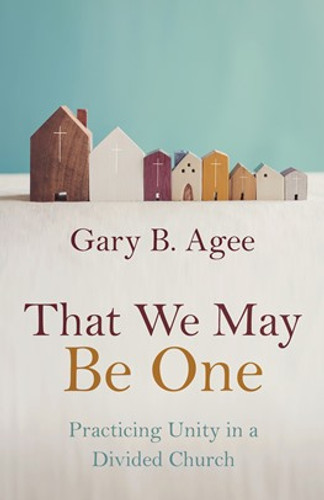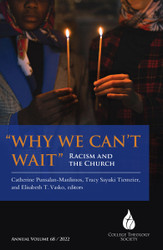Transcending divisions and healing the broken Body of Christ.
Disunity is a reality within churches today. Left unaddressed, political disagreements and racial inequities can fester into misunderstanding, resentment, and anger. But often the act of addressing this discord prompts further animosity, widening fissures into gaping fault lines between fellow members of the same community.
Table of Contents
Foreword by Michael Gulker
Introduction: Seeing and Not Seeing: An Autobiographical Introduction in Three Acts
1. Getting Started
2. Speaking of Unity
3. Taking on a Posture of Unity
4. The Upper Room Experience
5. The Bible and the Practice of Unity
6. False Gospels
7. From Pew to Practice
8. Champions for a Cause
Conclusion: Finding Home
| Format: | Paperback book |
|---|---|
| Product code: | LP6457 |
| Dimensions: | 5½" x 8½" |
| Length: | 165 pages |
| Publisher: |
Liturgical Press
|
| ISBN: | 9780814664575 |
| 1-2 copies | $17.55 each |
|---|---|
| 3-9 copies | $16.75 each |
| 10-49 copies | $15.96 each |
| 50-99 copies | $15.56 each |
| 100+ copies | $14.96 each |
Praise
In this frenzied and fractured time, the clamor of discontent seems to be the echo chamber of our days. Gary Agee’s That We May Be One stands resolute in offering to the churches a distinctive voice and creative alternative to the usual zero-sum battles of our culture. Agee recognizes that the church has fallen under the old imperial standard: we live at the expense of others. To seek genuine unity, to discover what Paul intimated to the early communities, to experience fellowship with those we would discount, entails the risk of asking how it is with those beyond our comfort zone. By sharing his own humbling experience of seeking unity as well as wisely providing a rich array of resources, Agee invites us to discover that the desire to be one intimately ties the depths of divine life with the entangled reality of our life together on this planet.
Victor Hugo said that there is nothing more powerful than an idea whose time has come. It may also be that there are few things more powerful than a book whose time has come, and I firmly believe this is one of those books, and this is one of those times. The times in which we live are marked by strife, confusion, and division. Too often, that is our reality in the church as well as in the rest of the world. Gary Agee calls us to be better—to be the church and build true community. I pray we answer that call.
Dr. Gary Agee has provided both incredible research and personal story in this text. He offers the reader a new understanding about what unity is—and what it’s not—and some ideas for making unity a reality. The close of each chapter provides discussion questions for groups and homework assignments to help each of us grow in Christ as Jesus prayed ‘that they may be one.’ Agee addresses the issues that divide us: race, gender, socioeconomics, LGBTQ+, nationality, religion, etc., in the hope that the reader will see how vast the inclusion/exclusion, us and them, is. It only takes one step for an individual to make unity possible—or to further alienate. Every person makes a difference. Thank you, Dr. Agee, for sharing your journey and your insight. I pray that we might be one.
This is a practical guide for churches who are ready to take steps to achieve something that is much easier to preach than it is to practice—Christian unity. Agee examines unity from different vantage points using a variety of sources, including Bible and tradition, anecdote and autobiography. Anyone who views the healing of racial and economic disparities as a desirable outcome of the church’s public witness will want to read this book.
This book offers hope when many seeking unity may feel the pull of despair. On offer here is not a blissful, naive hope that is marked by optimistic delusion, but the hope that is found in attentive listening and acting to make biblical calls to unity come to pass. In this book, Gary Agee takes seriously the failures of the Christian church and the reality of societal and political polarization. Instead of succumbing to despair, he finds a thread of hope in biblical texts and glimpses of churches that show a trajectory of unity. Each chapter deals with Scripture, social realities, and practical challenges and opportunities for local congregations. He guides and inspires the reader to make the practice of unity a purposeful part of personal and congregational reflection and action.
Gary Agee issues a bold call for unity to a highly polarized church. He honestly deals with the challenges facing a church divided by race, politics, gender, sexual orientation, denomination, and the like. Yet Agee invites readers to embrace a posture of unity and implement a hermeneutic of inclusion. That We May Be One is hopeful, practical, and compelling—a must-read for twenty-first century Christians!
We live in a time of cultural divide, religious tension, and personal conflict. And churches are not exempt from these struggles. Gary Agee serves as the ideal guide for faith leaders and people of faith who take seriously Jesus’s call for unity that goes beyond simply ‘getting along.’ The path toward true unity requires us all to take to heart the real-life struggles in our world and to walk boldly toward a new way of living. That We May Be One is a timely and beautifully written resource for this crucial work.
Gary Agee’s That We May Be One is a creative and courageous attempt to work at serious Christian unity. Agee is not naive in his desire for unity; as a Church of God pastor who earned his PhD at a Catholic university, Agee has broad first-hand experience of Christianity’s fractured existence. With his lucid prose and his informative autobiographical anecdotes Agee makes a compelling argument for how we can move forward fruitfully towards a unified Body of Christ. One need not agree with Agee on all of his suggestions in order to benefit greatly from his important contribution. Anyone interested in Christian unity (and disunity) should prayerfully read this book.
Author
Gary Agee, a pastor well-versed in leading diverse congregations, reflects here on the roots of division within the church and the virtues and practices that can promote the restoration of unity. With disarming honesty and humility, Agee offers sage advice gleaned from Scripture and years of practical experience to show how we might fulfill Jesus’s prayer on behalf of the church: “That all of them may be one, Father, just as you are in me and I am in you. . . . That they may be one as we are one.” At the end of each chapter, Agee includes exercises, discussion questions, and suggested practices, providing a concrete path to unity through dialogue and action.






![[Threshold Bible Study series] Colossians, Philemon, Ephesians: Unity in Christ's Church [Threshold Bible Study series] Colossians, Philemon, Ephesians: Unity in Christ's Church](https://cdn11.bigcommerce.com/s-86nw1qhj/images/stencil/190x250/products/5580/6089/cover__42736.1675806955.png?c=2)

